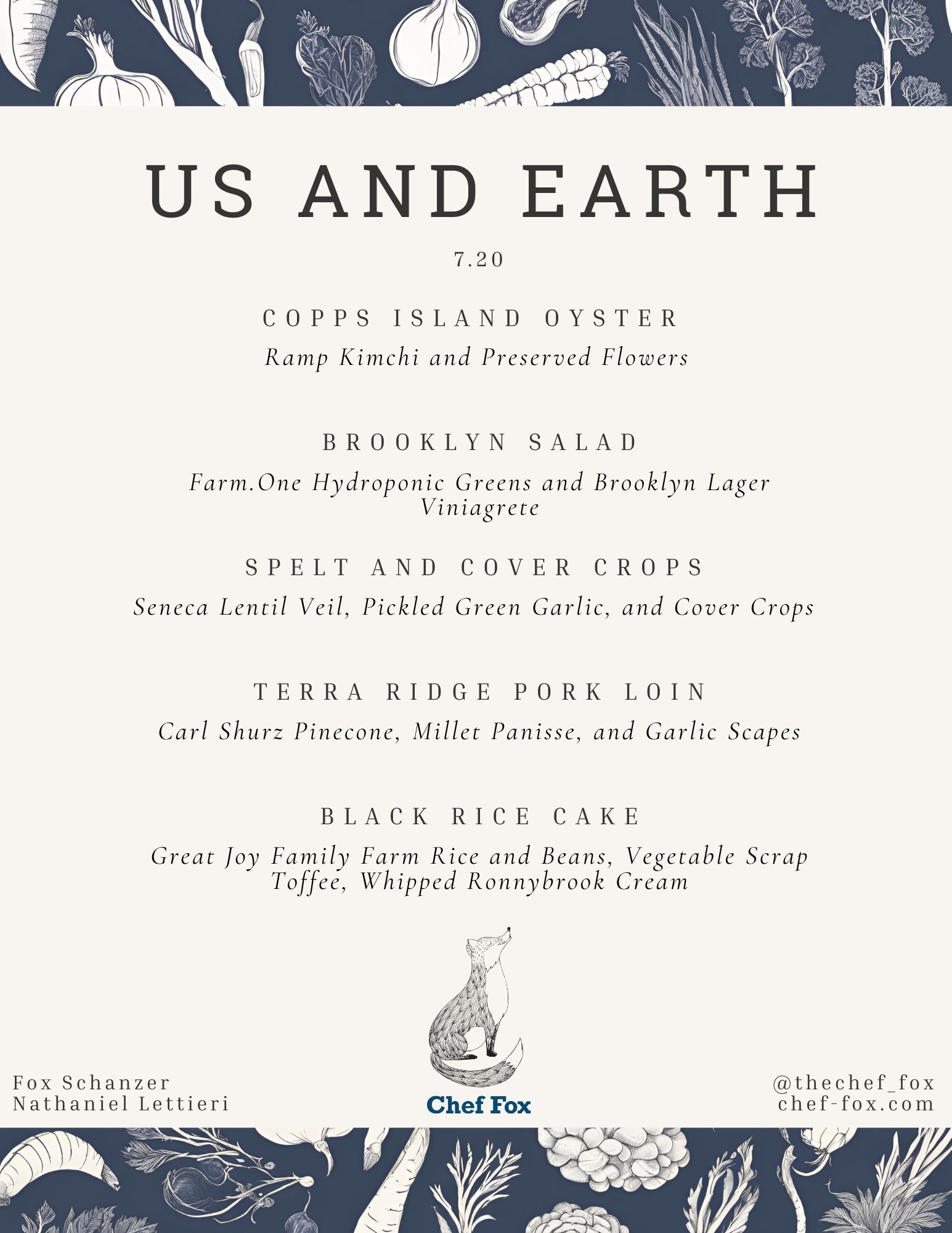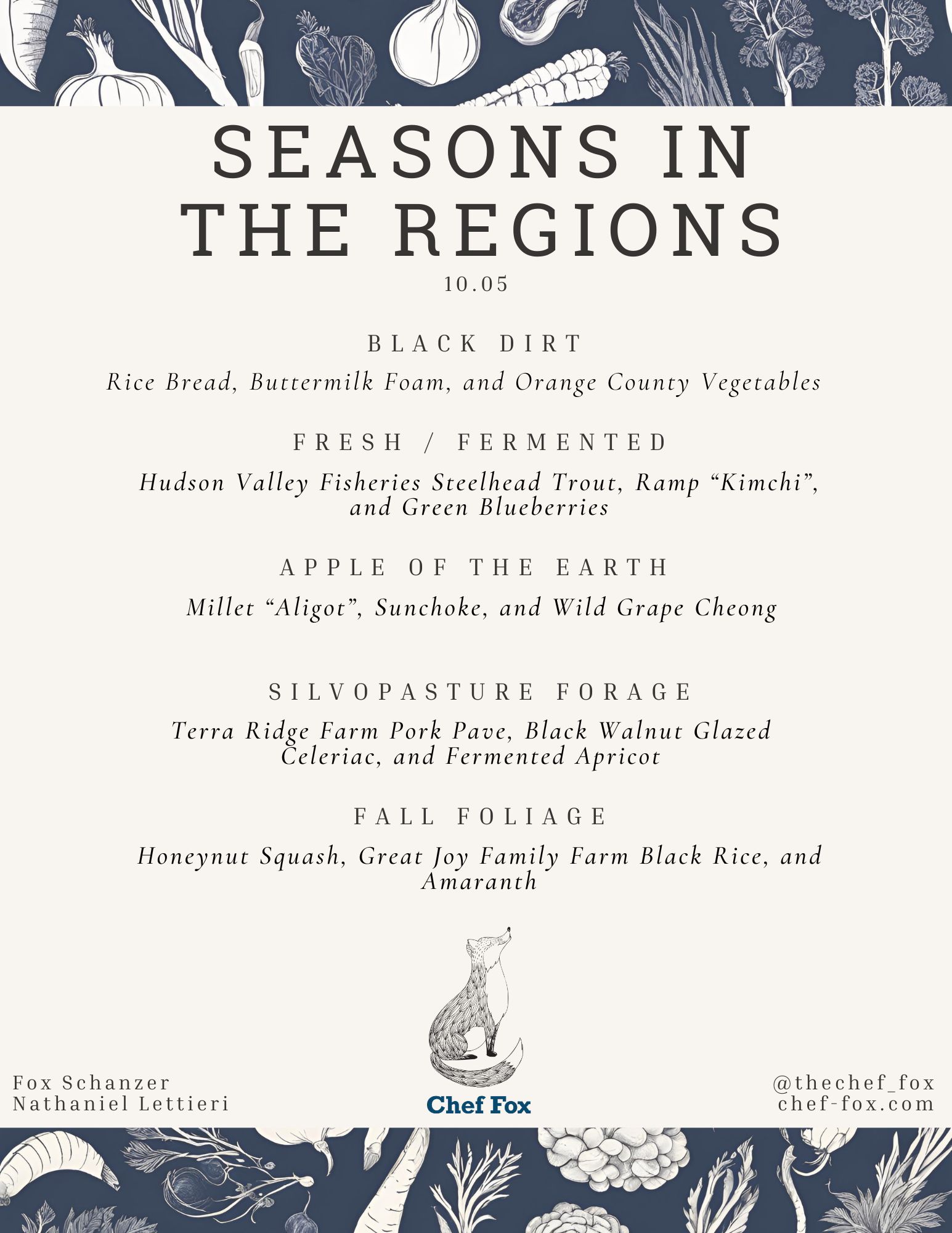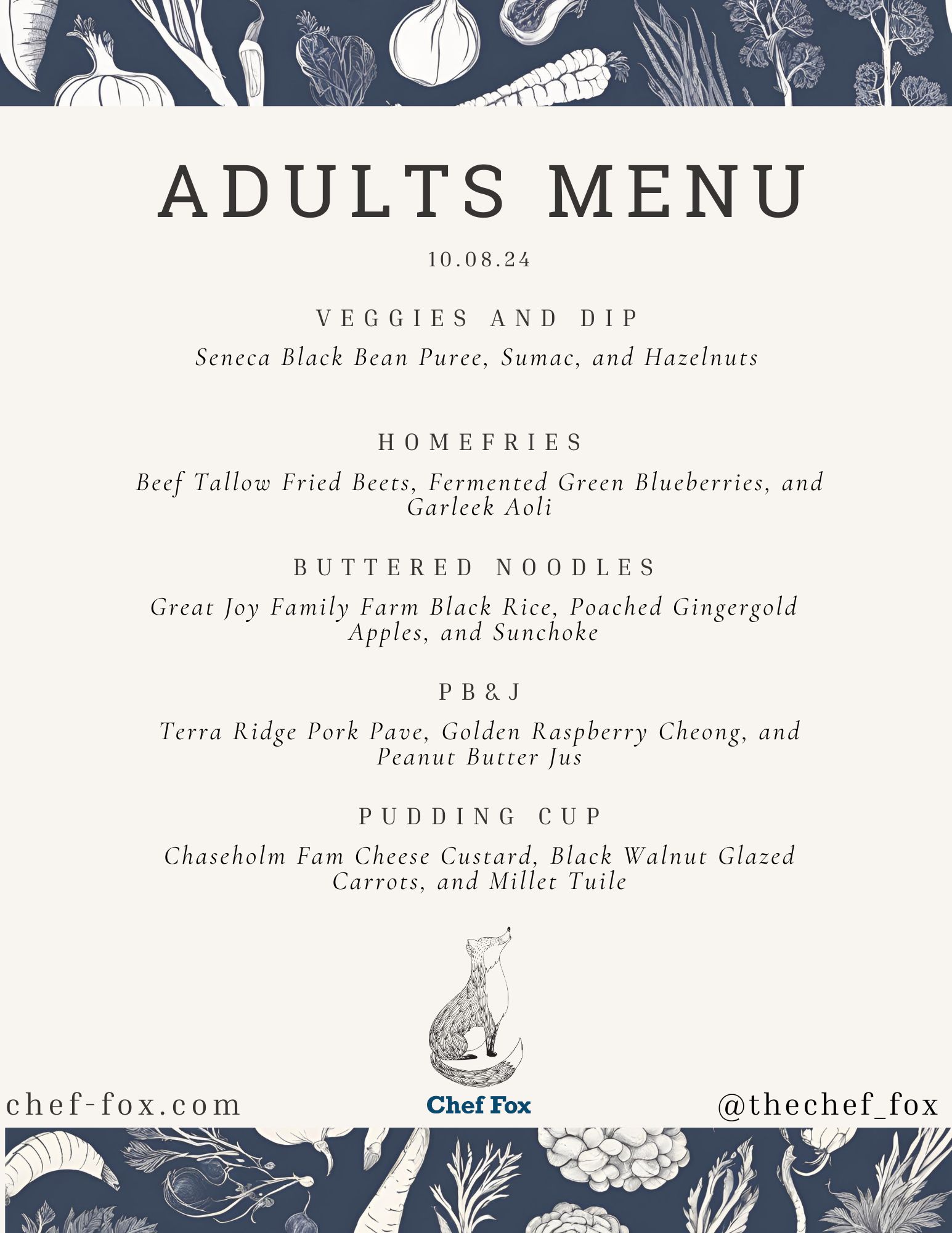More info about: Us and Earth
This menu was written for a ticketed sustainability-themed dinner and was designed to cover five important aspects of our food system.
1. For Water
Harvested just off the coast of his childhood home in CT, Copps Island Oysters transport Fox through space and time like few other foods.
In addition to its striking beauty, the oyster is an incredibly sustainable ingredient. It requires little food literacy or money to enjoy (at $0.75ea from producer), and has incredible protein and nutrient density. Oysters filter up to 50 gallons of water a day, trapping pesticide residue and removing harmful excess nutrients from bodies of water such as our very own Hudson River. Additionally, oysters sequester carbon to grow their shells. All of these benefits at less than 0.5% of the greenhouse gas emissions of livestock farming.
With a take on a classic pairing, Chef Fox serves Copps Island Oysters with fermented ramp leaves, carefully hand-picked less than 15 miles from the Copps Island Oyster farm in the Long Island sound.
2. For Air
This simple dish presents an opportunity to contemplate the wide, tangled web of transit that our everyday food travels through in order to get to our plates. Needless incredible amounts of carbon are emitted to transport salad ingredients all over the world. This salad is composed entirely of ingredients sourced from Brooklyn proper – featuring a range of greens from Farm.One in Park Slope, dressed with a Brooklyn Lager vinaigrette. Farm.One grows 100+ varieties of edible plants with a highly advanced, nutrient-rich hydroponic system. These ingredients have a shocking depth of flavor and striking aesthetics, presented clearly in this Brooklyn salad.
3. For Soil
This dish was inspired by Peter Martens of Seneca Grain and Bean in Penn Yan, NY. At Seneca, Peter grows a wide range of legumes and grains, notably Winter Lentils – the only lentils grown in the tri-state area. These (certified organic) lentils are intercropped with Peter’s wheat berries, providing cover, weed suppression, and nutrients for the farms main cash crops, like Spelt and Rye. This fascinating relationship between two very different ingredients leads to increased soil health and thus, better tasting and more nutrient dense ingredients.
To showcase the relationship between the wheat berries and their cover crops, this spelt freekeh dish is covered with a paper thin lentil veil, prepared in the style of burmese tofu. Along with a wide variety of other common cover crops for the guest to explore, the spelt is complemented with preserved green garlic and whatever vegetables are in peak season on a given day.
4. For Animals
At Chef Fox, we believe that livestock can be an important and sustainable part of our food system when raised with the utmost care and attention to the land. While many animals feel at home in a pasture, pigs are in their natural habitat in a forest. Silvopasture is a beautiful farming practice that combines forestry, forage, and grazing pasture on one piece of land, allowing the pigs to roam in their natural habitat freely and forage on their favorite snacks, such as hickory nuts, black walnuts, and young pinecones. A very well known expression of this practice is the Dehesa in Spain, where Iberico pigs forage on acorns.
This relationship inspired Chef Fox Schanzer to serve the pork loin alongside young preserved pinecones, with a liver pate and jus to glean the nutritional benefits and flavor from less desirable parts of the animal. We source all of our pork and chicken from Terra Ridge Farm, one of our favorite partners.
Another key ingredient in this dish is Millet, a gluten free grain high in protein, fiber, and micronutrients. Millet is also great for soil health, such that many farmers in the U.S. will grow it despite the low demand. Because of a lack of market, farmers are often forced to turn it back into the soil or sell it as birdseed. Chef Fox Schanzer aims to promote underutilized, highly sustainable ingredients such as Millet, and uses this grain from Great Joy Family Farm whenever applicable.
5. For Us
Dessert is often the most hedonistic damaging plate of the day, for both our bodies and planet. Ingredients that we feel are essential in our after-dinner treat can be extremely difficult to source responsibly, and many people and places are exploited to get us our sugar, chocolate, vanilla, etc. At Chef Fox, we are always striving to create desserts that incorporate healthful ingredients that have a positive impact on the environment.
This dish, often referred to as “rice and beans”, is a proof of concept in using healthful, local ingredients to cut down on the usage and consumption of exploitative imports such as chocolate. A strikingly purple cake made from Great Joy Family Farm Black Rice is glazed with a chocolate ganache made almost entirely from Black beans from the same NY farm. For sweetness, a drizzle of toffee sauce made from onion and other sweet vegetable scraps. Without context, one would have no idea they are eating a low-sugar, high-protein, high-fiber dessert packed with antioxidants and vitamins.



